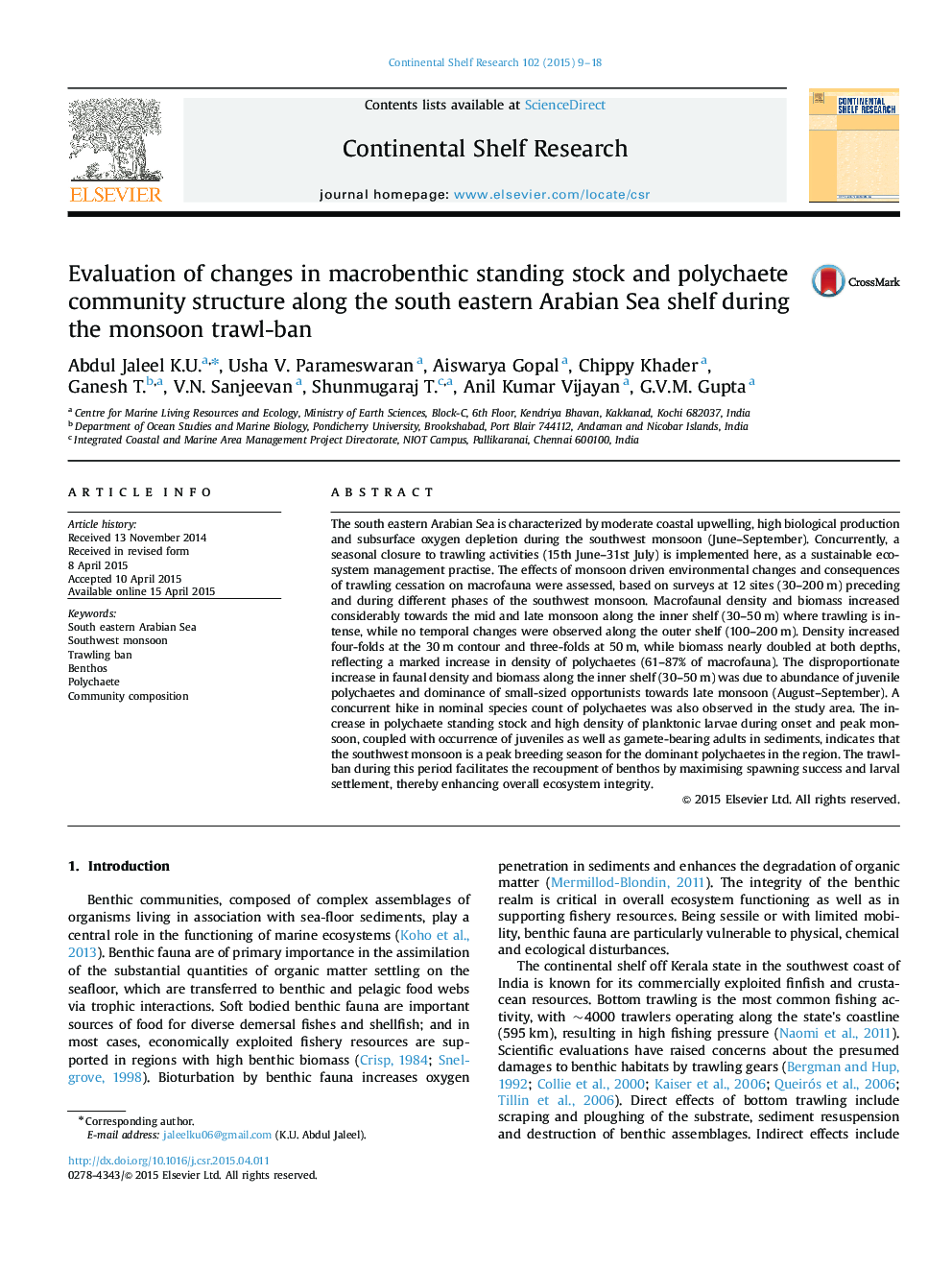| کد مقاله | کد نشریه | سال انتشار | مقاله انگلیسی | نسخه تمام متن |
|---|---|---|---|---|
| 4531677 | 1626110 | 2015 | 10 صفحه PDF | دانلود رایگان |
• Macrofaunal standing stock increased with monsoon high-production & trawl-ban.
• Hike in density & species count of polychaetes along inner shelf (30–50 m).
• No significant changes in hypoxia-impacted outer shelf (100–200 m).
• Meroplanktonic and juvenile polychaete density highest during peak monsoon.
• Concurrence of ban with breeding window ideal for sustaining ecosystem integrity.
The south eastern Arabian Sea is characterized by moderate coastal upwelling, high biological production and subsurface oxygen depletion during the southwest monsoon (June–September). Concurrently, a seasonal closure to trawling activities (15th June–31st July) is implemented here, as a sustainable ecosystem management practise. The effects of monsoon driven environmental changes and consequences of trawling cessation on macrofauna were assessed, based on surveys at 12 sites (30–200 m) preceding and during different phases of the southwest monsoon. Macrofaunal density and biomass increased considerably towards the mid and late monsoon along the inner shelf (30–50 m) where trawling is intense, while no temporal changes were observed along the outer shelf (100–200 m). Density increased four-folds at the 30 m contour and three-folds at 50 m, while biomass nearly doubled at both depths, reflecting a marked increase in density of polychaetes (61–87% of macrofauna). The disproportionate increase in faunal density and biomass along the inner shelf (30–50 m) was due to abundance of juvenile polychaetes and dominance of small-sized opportunists towards late monsoon (August–September). A concurrent hike in nominal species count of polychaetes was also observed in the study area. The increase in polychaete standing stock and high density of planktonic larvae during onset and peak monsoon, coupled with occurrence of juveniles as well as gamete-bearing adults in sediments, indicates that the southwest monsoon is a peak breeding season for the dominant polychaetes in the region. The trawl-ban during this period facilitates the recoupment of benthos by maximising spawning success and larval settlement, thereby enhancing overall ecosystem integrity.
Journal: Continental Shelf Research - Volume 102, 1 July 2015, Pages 9–18
